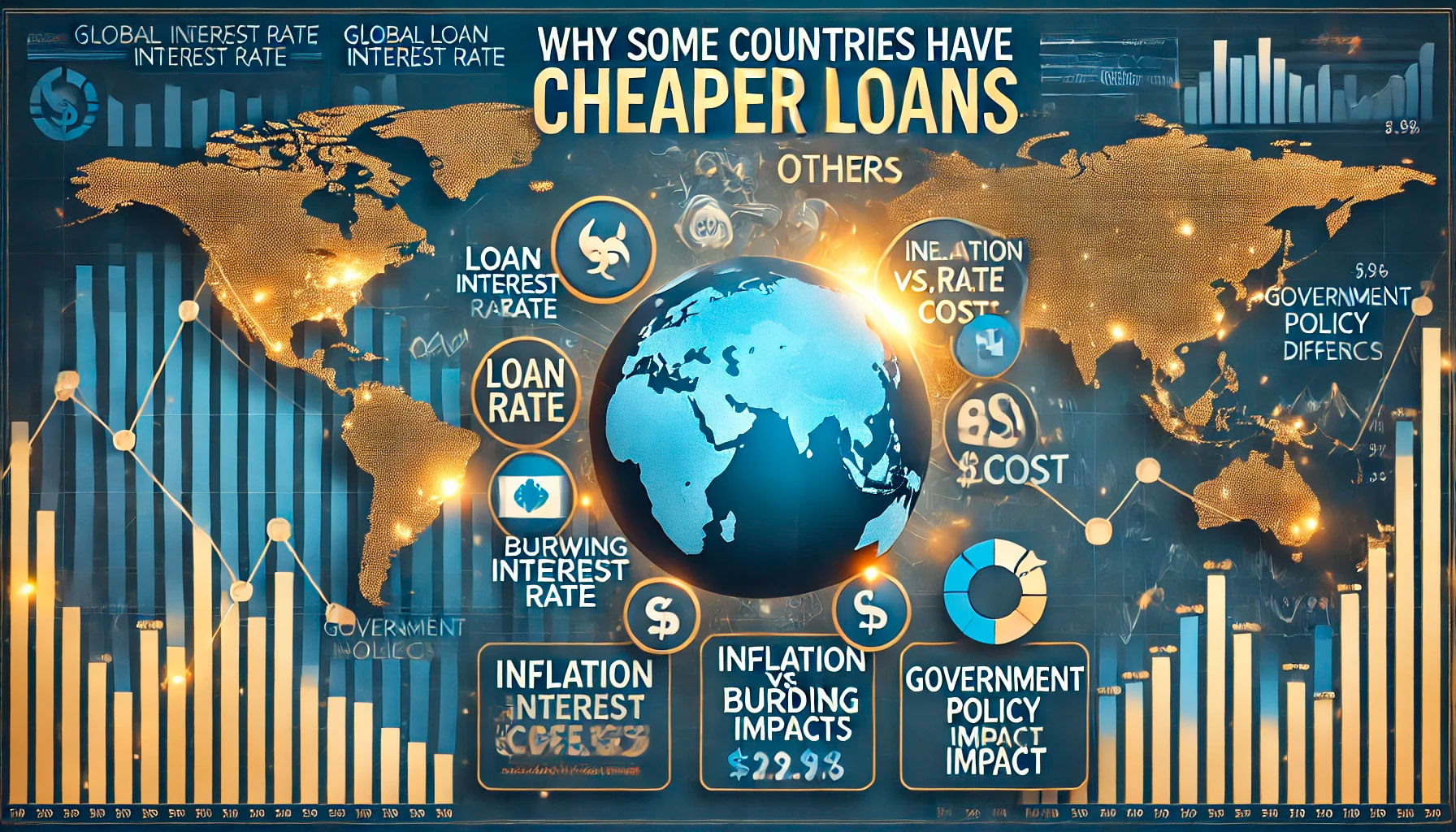In today’s global economy, access to credit is vital for both consumers and businesses. Loans enable individuals to purchase homes, cars, and education, while businesses use credit to expand, hire, and innovate. However, loan interest rates can vary significantly from one country to another, even when comparing similarly developed economies. This discrepancy in borrowing costs raises an important question: why do some countries offer cheaper loans than others? The answer lies in a complex mix of factors, including the economic environment, central bank policies, inflation, government intervention, and market competition. This article explores the various reasons why loans can be cheaper in certain countries compared to others.
The Role of Central Banks and Monetary Policy
Central banks play a crucial role in determining the interest rates that banks charge for loans. One of the primary tools central banks use to influence the cost of borrowing is the setting of the benchmark interest rate, also known as the policy rate. This rate serves as the basis for the interest rates that commercial banks charge for loans. When a central bank sets its policy rate lower, borrowing costs across the economy generally decrease, making loans cheaper for consumers and businesses.
Countries with central banks that maintain low policy rates, such as Japan or Switzerland, tend to have lower loan interest rates. For example, the Bank of Japan has kept interest rates near zero for many years as part of its efforts to stimulate economic growth and combat deflation. Similarly, Switzerland’s central bank has maintained negative interest rates in an attempt to stabilize the economy and reduce inflationary pressures. When central banks take aggressive steps to lower their policy rates, borrowing becomes cheaper, which in turn makes loans more affordable for citizens and businesses.
Inflation Rates and the Cost of Borrowing
Inflation has a direct impact on the cost of loans. In countries with high inflation rates, lenders typically charge higher interest rates to compensate for the eroding value of money over time. When inflation is high, the purchasing power of the currency decreases, and lenders demand higher returns on loans to ensure they don’t lose out on the value of the money they are lending. In such economies, higher interest rates act as a safeguard against inflation risks.
On the other hand, in countries with low and stable inflation rates, lenders are more willing to offer loans at lower interest rates. Countries like the United States, Germany, and Japan, which have relatively low inflation, can offer cheaper loans because lenders face less risk of losing money due to inflation. This makes borrowing more affordable, contributing to the overall economic stability of the country. In contrast, developing economies with high inflation, such as those in parts of Latin America and Africa, often have higher loan interest rates as a response to inflationary pressure.
Credit Risk and Market Conditions
Another critical factor influencing loan interest rates is the level of credit risk in a country. Lenders assess the risk of default when determining interest rates, and countries with higher perceived risks often face higher loan costs. For instance, developing countries or countries with unstable political environments may have higher interest rates due to the increased risk of borrowers defaulting on their loans. In such markets, lenders demand higher returns to compensate for the potential losses associated with lending in higher-risk environments.
In contrast, countries with stable political systems and strong economic performance generally face lower levels of credit risk. In these countries, lenders are more confident that borrowers will repay their loans, leading to lower interest rates. Additionally, countries with well-established and transparent financial systems can more effectively assess credit risk and lend at lower rates. Countries like the United States, Canada, and much of Western Europe benefit from such stable conditions, which contribute to lower loan interest rates.

Government Intervention and Subsidies
Government policies and interventions can also have a significant impact on loan interest rates. In some countries, governments offer subsidies or guarantees for loans to encourage borrowing, which can drive down interest rates. For example, in many European countries, governments provide loan guarantees for students, small businesses, or homebuyers, which helps reduce the perceived risk for lenders and, in turn, lowers interest rates. This makes borrowing cheaper and more accessible, particularly for those who may otherwise struggle to secure a loan due to a lack of credit history or collateral.
In other cases, governments may directly influence interest rates by imposing regulations on financial institutions. In some countries, the central bank may set an upper limit on how much commercial banks can charge for loans, which helps to keep borrowing costs low for consumers. Such government interventions are more common in countries with state-controlled financial systems or in economies where the government plays a large role in economic management.
Market Competition and the Availability of Credit
The level of competition among banks and financial institutions within a country also plays a significant role in determining the cost of loans. In countries with a highly competitive banking sector, financial institutions are more likely to lower interest rates to attract borrowers. When multiple banks and lenders vie for market share, they often reduce loan rates or offer attractive terms to stand out from their competitors.
In contrast, in countries with less competition in the banking sector, banks may have more power to set higher interest rates, knowing that consumers have fewer options. In some emerging markets or regions with limited access to financial institutions, banks may face less competition, leading to higher loan rates. However, as fintech companies and alternative lenders continue to expand, especially in developed economies, competition in the lending market is increasing, which can drive down borrowing costs for consumers.
Exchange Rates and International Factors
Exchange rates can also play a role in the cost of loans, especially in countries that rely on foreign capital for lending. When a country’s currency depreciates relative to other currencies, foreign investors may demand higher interest rates on loans to account for the increased risk of currency fluctuations. This is particularly relevant in countries with high levels of external debt or those that borrow heavily from international markets. Conversely, countries with stronger currencies or stable exchange rates may face lower borrowing costs from foreign investors, contributing to cheaper loans domestically.
Global economic conditions and the policies of major central banks, such as the U.S. Federal Reserve, also have a ripple effect on loan interest rates worldwide. For example, when the Federal Reserve raises interest rates, countries that rely on borrowing from international markets may see their borrowing costs rise as well. These global factors, along with domestic conditions, determine how much it costs to borrow money in different countries.
Conclusion: A Complex Web of Factors
In conclusion, the reasons why some countries offer cheaper loans than others are multifaceted and involve a combination of domestic and international factors. Central bank policies, inflation rates, credit risk, government interventions, market competition, and exchange rates all play important roles in shaping the cost of borrowing. Countries with stable economies, low inflation, and strong financial systems tend to offer cheaper loans, while countries with higher risks and less competitive financial markets often face higher borrowing costs. Understanding these factors is crucial for both consumers and businesses, as the cost of loans can have a significant impact on their financial decisions and the broader economic environment.

